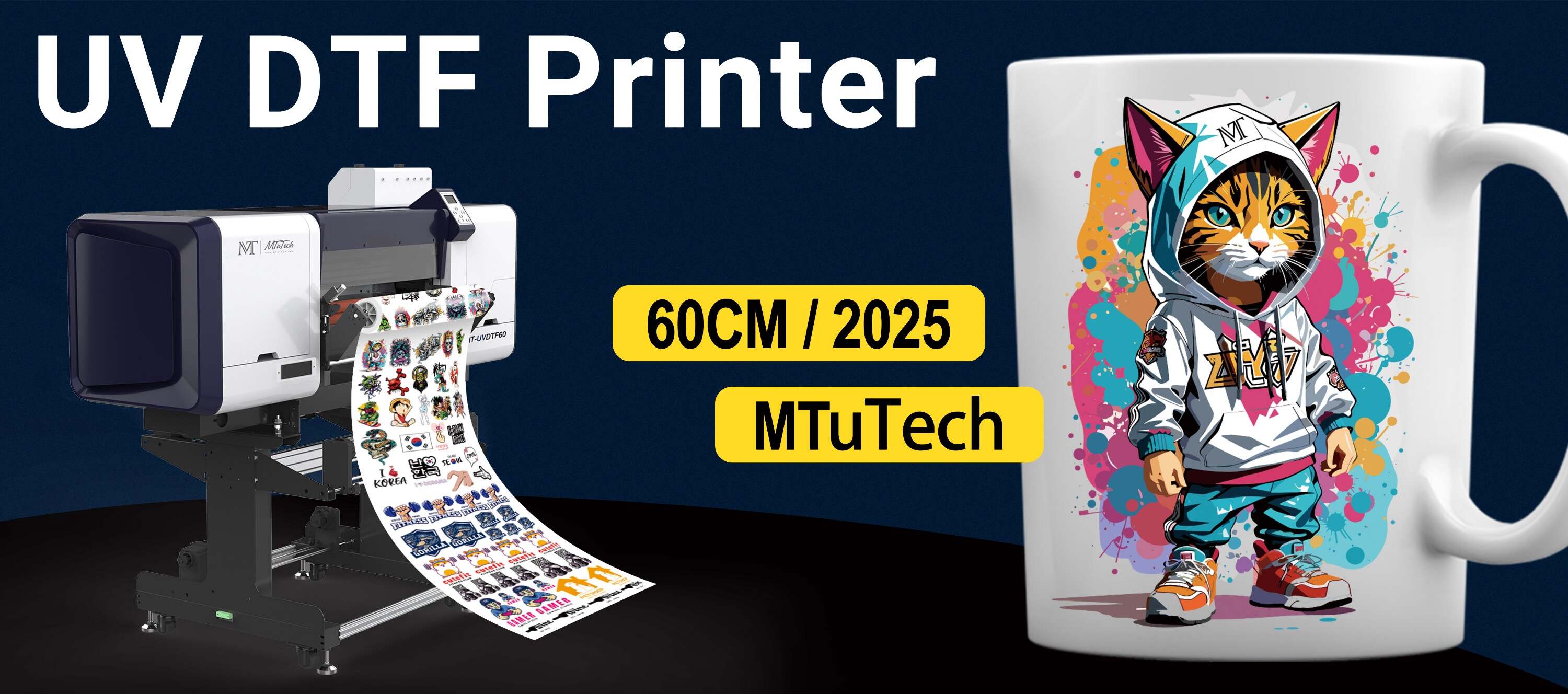Introduction
In the world of printing technology, Direct to Film (DTF) and UV printing have become popular methods for creating high-quality prints on various materials. DTF printer UV technology combines the best of both worlds, allowing for vibrant, detailed prints that adhere well to different surfaces. This blog post aims to delve into DTF printer UV technology, exploring its benefits, features, applications, and more.
What is DTF Printing?
Direct to Film (DTF) printing is a relatively new method in the printing industry, designed to simplify the process of transferring designs onto garments and various substrates. This technique involves printing designs onto a specialized film, which is later transferred onto the target surface using heat and pressure.
UV Printing Explained
UV printing utilizes ultraviolet light to cure or dry the ink as it is printed onto the substrate. Unlike traditional printing methods that use a drying process that can take time, UV printing instantly cures the ink, enabling a quicker production turn-around and more durable prints.
How DTF Printer UV Works
Combining DTF and UV printing processes provides several advantages for modern print businesses. The mechanism involves printing the design onto a special transfer film using DTF technology, followed by a UV curing process. Here’s a breakdown of the process:
Design Creation: Artists create a digital design using graphic design software.
Film Printing: The design is printed onto a transfer film using DTF technology.
UV Curing: The printed film passes through a UV printer that exposes the printed ink to UV light, curing it immediately.
Transfer: The cured design is then transferred onto the desired substrate using heat and pressure.
Benefits of Using DTF Printer UV Technology
1. Versatility Across Substrates
One of the major advantages of DTF printer UV is its ability to print on a wide range of surfaces, including:
Cotton
Polyester
Leather
Wood
Metals
Plastics
This versatility opens up new avenues for businesses to cater to different markets.
2. Enhanced Durability
UV-cured inks are known for their durability. Prints produced with DTF printer UV technology are resistant to fading, scratching, and washing. This means that customers can expect their designs to last longer, providing better value for their money.
3. High-Quality Prints
DTF printer UV technology yields vibrant, high-resolution prints that can capture minute details. The combination allows for stunning graphics, intricate designs, and vivid colors that stand out.
4. Eco-Friendly Options
As environmental concerns grow, many manufacturers are producing eco-friendly inks that are less harmful to the planet. By choosing UV-curable inks, businesses can reduce their carbon footprint while providing excellent print quality.
5. Fast Production Speeds
The instant curing process of UV printing minimizes production time, allowing businesses to fulfill orders quickly. This speed is especially beneficial for on-demand printing or last-minute projects.
Features of DTF Printer UV Technology
1. User-Friendly Interfaces
Most DTF printer UV machines come equipped with intuitive interfaces that simplify the printing process. Operators can easily navigate through settings, adjust parameters, and make necessary changes without extensive technical knowledge.
2. Customizable Settings
Print settings can be tailored to suit various projects. Operators can adjust ink levels, curing speeds, and even color profiles, giving them the flexibility to meet different client demands.
3. Automatic Features
Many modern DTF printer UV models include automatic cleaning systems and maintenance alerts. This feature helps reduce downtime and ensures consistent print quality over time.
4. Compact Designs
Despite their capabilities, newer DTF printers with UV technology are designed to be compact and space-efficient. This makes it easier for businesses with limited workspace to incorporate advanced printing systems into their operations.
Applications of DTF Printer UV Technology
The applications of DTF printer UV technology are vast and varied. Here are some key industries and uses:
Fashion and Apparel: Customized clothing, including t-shirts, hoodies, and sportswear.
Promotional Products: Creating unique designs on items like bags, caps, and other merchandise.
Interior Decor: Printing artwork, wallpapers, and home textiles.
Signage: Producing high-quality signs for shops and events.
Personalized Gifts: Customized gifts for special occasions like weddings and birthdays.
Conclusion
DTF printer UV technology represents a breakthrough in the printing industry, combining the flexibility of DTF printing with the efficiency of UV curing. With its wide range of applications and numerous benefits — including durability, quick production speeds, and the ability to print on various substrates — it's no wonder that more businesses are adopting this technology. If you're looking to elevate your printing capabilities, explore our high-quality UV-DTF printers here and find the perfect solution for your needs.
FAQ
What materials can be printed on with DTF printer UV technology?
DTF printer UV technology can be used on a variety of materials, including textiles (like cotton and polyester), wood, metal, plastics, and even leather, making it highly versatile for numerous applications.
Is DTF printer UV technology eco-friendly?
Yes, many manufacturers are producing eco-friendly UV inks that are less harmful to the environment. This technology helps reduce the overall carbon footprint compared to traditional printing methods.
How durable are prints made with DTF printer UV?
Prints made with DTF printer UV are known for their exceptional durability. They are resistant to fading, scratching, and are suitable for washing, ensuring that designs stay vibrant and intact over time.
How long does the printing process take with DTF printer UV?
The printing process is significantly faster than traditional processes due to the instant curing of UV inks, enabling quick turn-around times and efficient production for various projects.
Are DTF printers easy to operate?
Many modern DTF printers come with user-friendly interfaces that simplify the operation. Additionally, automatic features and customizable print settings make them accessible even for users with limited technical experience.

